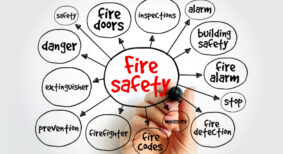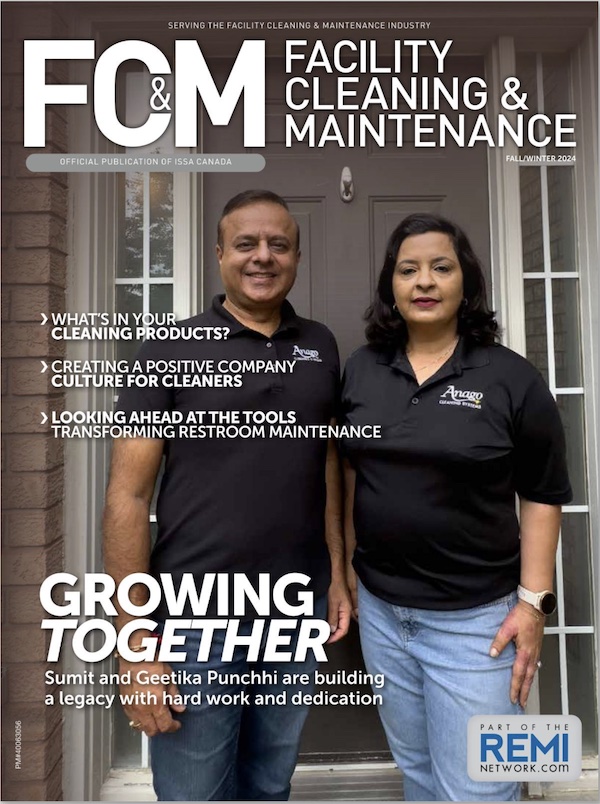Smart restroom solutions hit the facility maintenance market in earnest in 2018, offering early adopters an opportunity to use the Internet of Things (IoT) to gather data in real-time from sensors placed in various pieces of restroom equipment. The technology allows facility managers and maintainers to remotely monitor restroom conditions, and the data gathered helps them reduce product outages and waste, to address issues like clogged toilets and jammed dispensers promptly. This results in less dispenser downtime and fewer disappointed users.
RELATED: A greener approach to public restrooms
Data collection
Over the last six years, smart restroom solutions have advanced in scalability and capability, the amount of data they collect has increased substantially and the insights gained have deepened. This has empowered facility managers and maintainers to identify and correct inefficiencies in their staffing and scheduling, monitor restroom traffic patterns to perform predictive maintenance, reduce waste and the overall cost of disposables, and improve both the user experience and maintainer productivity.
Now, as artificial intelligence (AI) is applied to the depth and breadth of data that smart restroom solutions collect, insights are becoming more accurate, more actionable, and more results-oriented, informing everything from restroom design to staffing to budgeting. There is no question that AI is already leading to significant efficiencies and improved performance in restroom cleaning and maintenance – all with a demonstrable return on investment. As smart restroom solutions continue to better integrate with other smart building solutions, AI will soon aggregate that collective data to generate unprecedented facility-wide efficiencies and performance.
Behaviour-based tools
But what about facilities that want to improve cleanliness and productivity yet prefer to dip a toe in the water before taking a deep dive into a comprehensive smart restroom solution or those that don’t need or have the right people in place to manage such a depth of data? What about facilities that simply want to get more value out of the dispensers they purchase without layering on additional services or tools?
The key lies in designing restroom innovations that are grounded in intuitive and behaviour-centred design principles, emphasizing empathy and ergonomics to enhance the human experience, fit into current behaviour patterns or encourage new behaviour patterns, and drive productivity. The aim is to add speed, simplicity, and safety to those daily tasks often considered mundane and tedious. Additional benefits include improved maintainer morale, reduced restroom disruption and dispenser downtime, and fewer restroom complaints.
Consider the task of replacing consumables. Already, several in-market restroom dispensing systems make this faster and easier than ever. Examples include paper towel dispensers with colour-coded loading touch points that eliminate the need to read and interpret instructions and closed soap systems with all-in-one disposable refills that require little more than removing the empty reservoir and inserting the new one. In these cases, maintainer success and stocked dispensers are assured within minutes or less.
Perhaps one of the most innovative solutions to date relates to the task of replacing empty toilet paper rolls, a task performed every day, multiple times a day. It is so routine, in fact, that maintainers often perform it on autopilot and inadvertently replace rolls before necessary, which wastes time, toilet paper, and money. The age-old solution of telling maintainers to only replace the empty rolls has typically been ineffective, so, last year, a new toilet paper dispenser was introduced that incorporates a roll spindle system with four independent roll holders that drop into the loading position when the dispenser is open, and the holder is empty. It’s simply not an option to replace a roll that doesn’t need to be replaced.
As for what’s to come in intuitive dispenser design, manufacturers are currently working on integrating maintainer feedback cues in the form of audible, visible, or tactile signals to guide maintainers through their tasks if and as necessary. For example, if a roll of paper towel is not properly secured, the dispenser will immediately emit a sound or flash a light. This type of design feature will further expedite replacing consumables and performing dispenser maintenance while enabling maintainer success.
Close-range technology
The industry may also see close-range smart technology in the not-too-distant future. While comprehensive smart restroom solutions do alert facility managers and maintainers in real-time to restroom conditions that require attention, those individuals aren’t always in a position to respond immediately. Busy facility managers may be focused on the HVAC or security system, and the maintainer may be vacuuming carpets on a different floor of the building. With close-range smart technology built into the dispenser, the maintainer would receive an alert on their mobile device while in the very restroom that requires attention or when within close proximity. This eliminates disruptions to the maintainer’s current workflow, improving efficiency and productivity while attending to the restroom.
This type of close-range smart technology offers a vast array of potential use cases. Imagine maintainers having the ability to change the dispenser’s setting on their mobile device while walking past. Or imagine them scanning the dispenser with their mobile device, identifying issues such as worn gears or an aged circuit board that could otherwise go undetected until the dispenser simply stops working, and virtually requesting replacement parts on the spot to perform preventative maintenance. Better yet, imagine the dispenser communicating directly with the manufacturer’s customer service team after self-diagnosing a problem.
Today’s smart solutions
Within the facility maintenance industry, the excitement over comprehensive smart solutions is palpable, not surprising given the ongoing labour challenges and cost pressures, and there is little doubt the industry is on the cusp of its most significant transformation in decades. While AI will play a key role in that transformation, dispensers designed with the maintainer in mind will, too. Together, high- and low-tech solutions will play a pivotal role in streamlining operations, improving maintainer productivity, and achieving meaningful results.
Ronnie Phillips, who has a Ph.D. in Chemistry from the Georgia Institute of Technology, is Senior Director of Washroom Innovation at GP PRO, the away-from-home division of Georgia-Pacific, and an adjunct faculty member in Georgia State University-Perimeter College’s Chemistry Department. GP PRO is a recognized leader in designing innovative restroom solutions that meet the needs of both restroom users and maintainers. To learn more, visit www.gppro.com.









